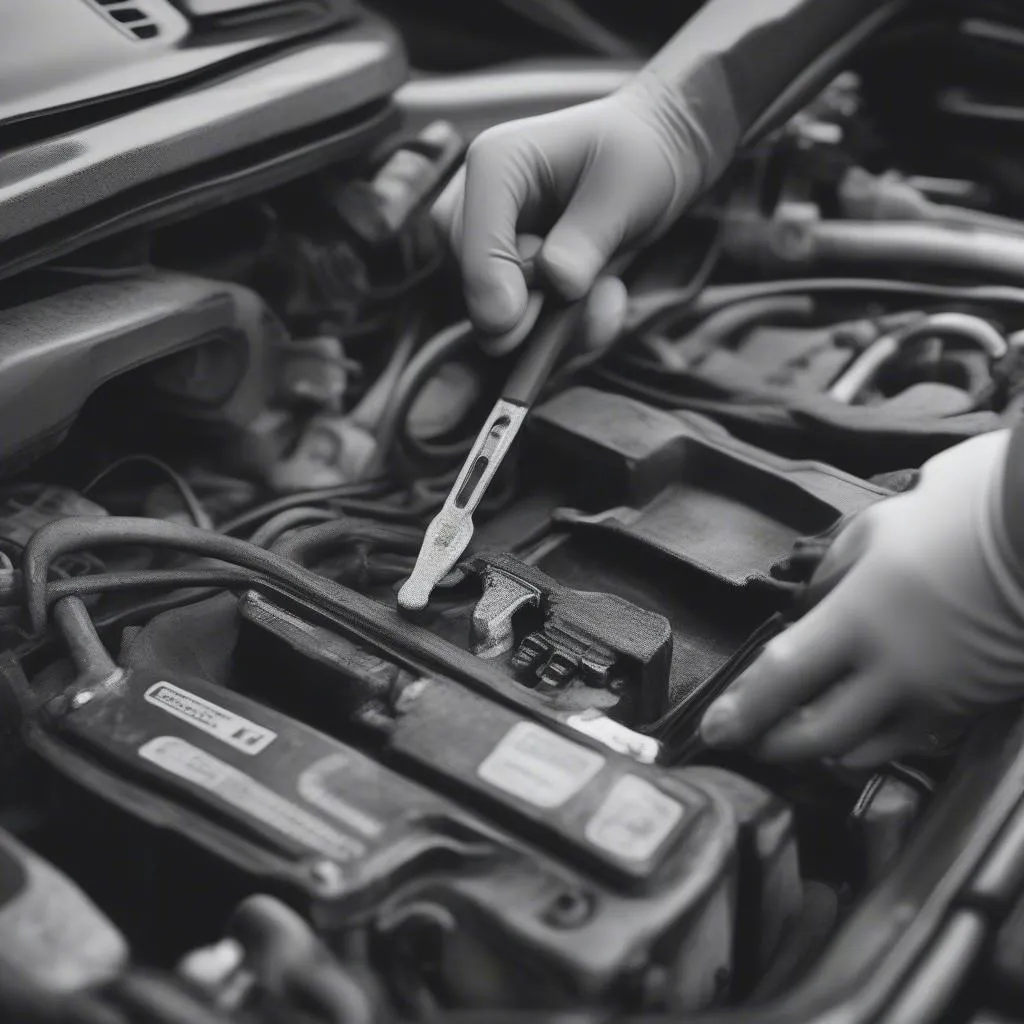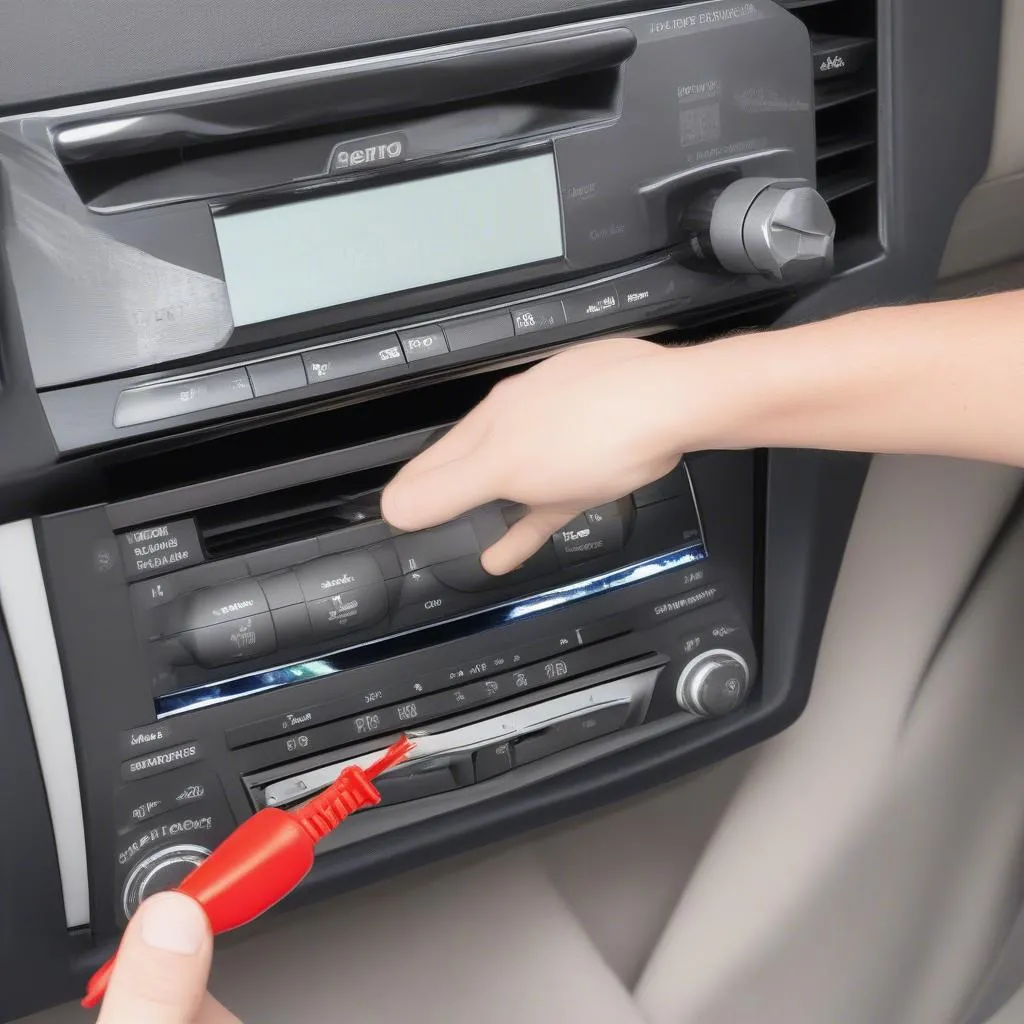Seeing a brake system warning light illuminate on your dashboard can be an unsettling experience. While it doesn’t always signify a critical issue, it’s crucial to address it promptly to ensure your safety and the health of your vehicle. This guide will delve into the common causes of a lit brake warning light, how to diagnose the problem, and potential solutions, including resetting the light.
Understanding Your Car’s Brake System Warning Light
The brake system warning light is your car’s way of communicating a potential issue with one or more components within the braking system. It’s essential to understand that this light doesn’t pinpoint a specific problem but rather serves as a general indicator.
Here are the most common culprits triggering the brake system warning light:
- Low Brake Fluid: This is the most frequent cause. Brake fluid is the lifeblood of your car’s braking system, and a leak or low fluid level can significantly impact braking performance.
- Worn Brake Pads: Your brake pads are designed to wear down over time. When they reach a certain thinness, a sensor triggers the warning light to alert you it’s time for a replacement.
- Faulty ABS System: Modern vehicles come equipped with an Anti-lock Braking System (ABS). A malfunctioning ABS module or sensor can trigger the warning light.
- Parking Brake Engaged: While seemingly obvious, it’s easy to overlook. If your parking brake is even slightly engaged, the warning light might appear.
Diagnosing the Problem: A Step-by-Step Approach
Before attempting to reset the brake system warning light, it’s crucial to identify the underlying cause. Here’s a systematic approach:
- Check Your Parking Brake: Ensure your parking brake is fully disengaged. Sometimes, even a slight engagement can trigger the light.
- Inspect Brake Fluid Level: Locate the brake fluid reservoir under the hood (refer to your owner’s manual). The reservoir will have a “Min” and “Max” marking. If the fluid level is below the “Min” mark, it needs to be topped up.
- Visually Inspect Brake Pads: If possible, take a look at your brake pads through the wheel spokes. Thin brake pads with very little friction material left will need to be replaced.
- Scan for Trouble Codes: If the brake fluid level is sufficient and the parking brake is disengaged, it’s recommended to scan your vehicle’s computer for trouble codes using an OBD-II scanner. This can help pinpoint issues with the ABS system or other electronic components.
Resetting the Brake System Warning Light
Important: It’s vital to address the root cause triggering the warning light. Simply resetting the light without fixing the underlying problem is dangerous and could lead to brake failure.
Once you’ve addressed the root cause (e.g., refilled brake fluid, replaced brake pads, repaired ABS fault), you can attempt to reset the warning light. There are two common methods:
1. Disconnecting the Battery:
- Disconnect the negative (black) terminal of your car battery and wait for about 15-20 minutes. This can help reset the vehicle’s computer system.
- Reconnect the negative terminal.
- Turn on the ignition and check if the warning light has reset.
2. Using an OBD-II Scanner:
- Connect the OBD-II scanner to your vehicle’s OBD-II port (usually located under the steering wheel).
- Turn on the ignition.
- Follow the scanner’s instructions to access the brake system module and select the “reset” or “clear codes” function.
Note: The exact steps for resetting the light might vary depending on your vehicle’s make and model. Consult your owner’s manual or seek guidance from a qualified mechanic if needed.
When to Seek Professional Help
While some brake system issues can be addressed with basic DIY knowledge, it’s crucial to acknowledge when professional help is necessary. If you:
- Are uncomfortable working on your car’s brake system
- Cannot pinpoint the cause of the warning light after inspection
- Encounter complex error codes requiring specialized knowledge
- Notice unusual noises or sensations when braking
It’s strongly advised to take your vehicle to a certified mechanic or dealership for a thorough inspection and repair.
FAQs: Resetting Brake System Warning Lights
1. Can I drive my car with the brake warning light on?
It’s highly discouraged. Driving with a lit brake warning light puts you at risk. Have your braking system inspected immediately.
2. Will the brake warning light reset itself?
In some cases, the light might reset itself after addressing the issue (like refilling brake fluid). However, it’s best to reset it manually to ensure the system is functioning correctly.
3. How often should I check my brake fluid?
It’s good practice to check your brake fluid level at least once a month and top it up as needed.
4. How long do brake pads typically last?
Brake pad lifespan varies depending on driving habits and conditions. On average, they last between 30,000 to 70,000 miles.
5. Can I use any brake fluid for my car?
No, using the wrong type of brake fluid can damage your braking system. Consult your owner’s manual to determine the correct brake fluid type for your vehicle.
Conclusion
A glowing brake system warning light serves as a vital reminder to prioritize your car’s braking system. By following the diagnostic steps outlined in this guide, you can identify the root cause and potentially resolve it. Remember, a properly functioning brake system is paramount for your safety and the safety of others on the road. Never ignore this crucial warning sign.


